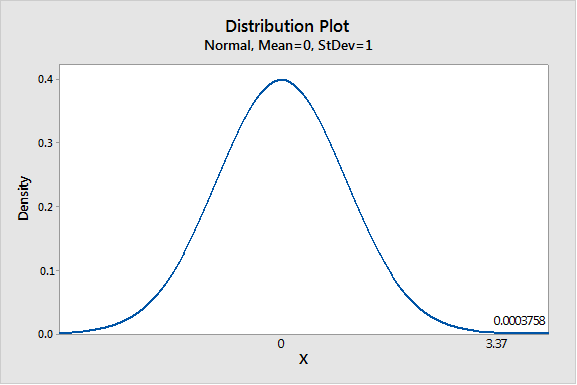
For Problems 7-21, please provide the following information.
(a) What is the level of significance? Stale the null and alternate hypotheses, (b) Check Requirements What sampling distribution will you use? Do you think the sample size is sufficiently large? Explain Compute the value of the sample test statistic and corresponding z value. (c) Find the P-value of the test statistic Sketch the sampling distribution and show the area corresponding to the P-value.
(d) Based on sour answers in parts (a) to (c), will you reject or fail to reject the null hypothesis? Are the data statistic ally significant at level a?
(c) Interpret your conclusion in the context of the application.
Focus Problem: Benford's Law Again, suppose you are the auditor for a very large corporation. The revenue file contains millions of numbers in a large computer data bank (see Problem 7). You draw a random sample of n = 228 numbers from this file, and r = 92 have a first nonzero digit of 1.
Let p represent the population proportion of all numbers in the computer file that have a leading digit of 1.
i.Test the claim that p is more than 0.301. Use
ii.If p is in fact larger than 0.301, it would seem there are too many numbers in the file with leading 1s. Could this indicate that the books have been “cooked" by artificially lowering numbers in the file? Comment from the point of view of the Internal Revenue Service, Comment from the perspective of the Federal Bureau of Investigation as it looks for "profit skimming" by unscrupulous employees.
iii.Comment on the following statement: "If we reject the null hypothesis at level of significance
(i)
(a)
The level of significance, null and alternative hypothesis.
Answer to Problem 8P
Solution: The level of significance is
Explanation of Solution
The level of significance is defined as the probability of rejecting the null hypothesis when it is true, it is denoted by
Null hypothesis
Alternative hypothesis
(b)
To find: The sampling distribution that should be used and compute the z value of the sample test statistic.
Answer to Problem 8P
Solution: The sampling distribution
Explanation of Solution
Calculation:
The
The standardized sample test statistic for
(c)
To find: The P-value of the test statistic and sketch the sampling distribution showing the area corresponding to the P-value.
Answer to Problem 8P
Solution: The P-value of the test statistic is 0.0004.
Explanation of Solution
Calculation:
We have z = 3.37
Using Table 3 from the Appendix to find the specified area:
Thus P- value is 0.0004.
Graph:
To draw the required graphs using the Minitab, follow the below instructions:
Step 1: Go to the Minitab software.
Step 2: Go to Graph > Probability distribution plot > View probability.
Step 3: Select ‘Normal’ and enter Mean 0 and Standard deviation 1.
Step 4: Click on the Shaded area > X value.
Step 5: Enter X-value as 3.37 and select ‘Right tail’.
Step 6: Click on OK.
The obtained distribution graph is:

(d)
Whether we reject or fail to reject the null hypothesisand whether the data is statistically significant for a level of significance of 0.01.
Answer to Problem 8P
Solution: The P-value
Explanation of Solution
The P-value of 0.0004 is less than the level of significance (
(e)
The interpretation for the conclusion.
Answer to Problem 8P
Solution: There is sufficient evidence to conclude that population proportion of numbers with leading “1” in the revenue file is more than the probability 0.301.
Explanation of Solution
The P-value of 0.0004 is less than the level of significance (
(ii)
To explain: Whether it is suspect that there are too many numbers in the data file with leading 1's.
Answer to Problem 8P
Solution: Yes. The revenue data file seems to be too many entries with leading digit 1.
Explanation of Solution
There are too many numbers in the data file with leading 1's. So, we cannot say that it is an indication of the books have been “cooked” by artificially lowering numbers in the file. From the viewpoint of the Internal Revenue Service and the Federal Bureau of Investigation as it looks for “profit skimming”, it may be true or false because there are too many numbers in the data file with leading 1’s.
(iii)
To explain: Whether it recommends further investigation before accusing the company of fraud.
Answer to Problem 8P
Solution: Our data lead us to reject the null hypothesis, more investigation is merited.
Explanation of Solution
Since, we reject the null hypothesis
Want to see more full solutions like this?
Chapter 9 Solutions
Understanding Basic Statistics
- A company found that the daily sales revenue of its flagship product follows a normal distribution with a mean of $4500 and a standard deviation of $450. The company defines a "high-sales day" that is, any day with sales exceeding $4800. please provide a step by step on how to get the answers in excel Q: What percentage of days can the company expect to have "high-sales days" or sales greater than $4800? Q: What is the sales revenue threshold for the bottom 10% of days? (please note that 10% refers to the probability/area under bell curve towards the lower tail of bell curve) Provide answers in the yellow cellsarrow_forwardFind the critical value for a left-tailed test using the F distribution with a 0.025, degrees of freedom in the numerator=12, and degrees of freedom in the denominator = 50. A portion of the table of critical values of the F-distribution is provided. Click the icon to view the partial table of critical values of the F-distribution. What is the critical value? (Round to two decimal places as needed.)arrow_forwardA retail store manager claims that the average daily sales of the store are $1,500. You aim to test whether the actual average daily sales differ significantly from this claimed value. You can provide your answer by inserting a text box and the answer must include: Null hypothesis, Alternative hypothesis, Show answer (output table/summary table), and Conclusion based on the P value. Showing the calculation is a must. If calculation is missing,so please provide a step by step on the answers Numerical answers in the yellow cellsarrow_forward
 College Algebra (MindTap Course List)AlgebraISBN:9781305652231Author:R. David Gustafson, Jeff HughesPublisher:Cengage Learning
College Algebra (MindTap Course List)AlgebraISBN:9781305652231Author:R. David Gustafson, Jeff HughesPublisher:Cengage Learning Glencoe Algebra 1, Student Edition, 9780079039897...AlgebraISBN:9780079039897Author:CarterPublisher:McGraw Hill
Glencoe Algebra 1, Student Edition, 9780079039897...AlgebraISBN:9780079039897Author:CarterPublisher:McGraw Hill

